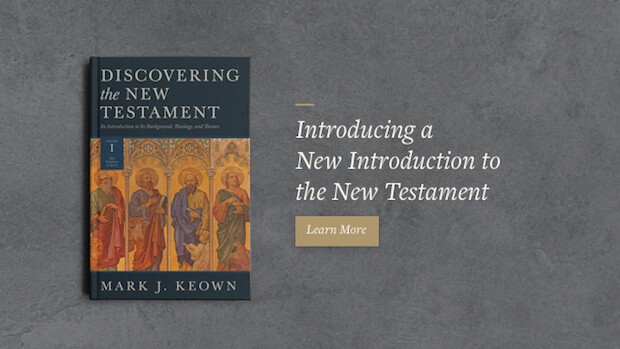By Mark J. Keown, ThD
At the time of the New Testament, Israel had been an occupied country, at least in part, since the eighth century BC. Its location on the Fertile Crescent meant that anyone seeking to dominate the region had to take control of Israel as it provided a key trade and military link between Europe, Asia Minor, Mesopotamia, and Africa.
Here are nine points of historical-political context that bear on the New Testament:
1. The division of north and south by Jeroboam
After Solomon’s death, long-term north-south hostility saw the north rebel and break away (930–913 BC; see 1 Kgs 12). At the time of the New Testament, this unresolved division was reflected primarily in the mutual hatred of Samaritans (identified with the Northern Kingdom) and Jews. The division also weakened the whole nation, making it more vulnerable to conquest. Israel’s eschatological hopes also included the restoration of broken Israel (see Amos 9:11). The evangelization of Samaria in Acts 8 fulfills this hope in the new Christian community.
2. The conquest and exile of the north by Assyria
The northern region including Galilee and Samaria was invaded and conquered by Assyrian leaders Shalmanesar V and Sargon II. This conquest saw many from the northern tribes exiled to Assyria. The northern region was subsequently repopulated, leading to a syncretistic blend of Judaism and other religions. This did not help relationships with Jerusalem (722 BC; see 2 Kgs 17).
3. The conquest and exile of the south
Babylon invaded and conquered Judah and Benjamin in 587 BC, led by Nebuchadnezzar. Jerusalem and the temple were destroyed. Many of Israel’s best were deported to Babylon for seventy years (see 2 Kgs 24–25).
4. The restoration after the release of exiled Jews
As predicted by Isaiah (Isa 44:28; 45:1), Cyrus the Great conquered Babylon and Babylon fell to the Medes and the Persians. The exiles were released, and the nation was rebuilt but remained under foreign rule (539–537 BC; see Ezra, Nehemiah, Haggai, and Zechariah).
5. The conquest of Israel by Macedonia/Greece
Led by Alexander the Great, Israel was taken by the expanding Macedonian Greek Empire (332–323 BC). This led to an improved standard of living and administration, Hellenization, and the extension of Greek culture.
6. Ptolemaic rule (323–198 BC)
Greek rule continued from Egypt through the Ptolemies. This was a time of peace and freedom for Jews. This period saw the development of “tax farmers,” locals who took taxes for the Hellenistic authorities (i.e., tax collectors). Ptolemy III (246–222 BC) promoted scientific investigation, including the idea that the world was spherical.
7. Seleucid control of Israel (198–143 BC)
Greek dominance shifted to Syria and the Seleucids. This period saw an increase in taxation and the promotion of Hellenism. Antiochus IV Epiphanes (175–164 BC), commonly described as “Epimanes” (madman) according to Polybius (Hist. 26.1), profaned the temple by erecting a statue of Zeus, enforced Hellenism, and advocated the violation of Jewish religious law. Many scholars see him as the “abomination of desolation” in Daniel (Dan 9:27; 11:31; 12:11). The figure mentioned in Mark 13:14 is fashioned after him. Antiochus IV Epiphanes’ arrogant rule led to Jewish rebellion. Certain Jews called Hasidim, or “pious ones,” stood up to this perceived syncretism, and conflict ensued.
8. The Maccabean Revolt
Antiochus’ rule led to full-blown rebellion against Seleucid (Syrian) control (167–160 BC). After the desecration of the temple, Mattathias, an old priest, refused to sacrifice to Zeus, destroyed the pagan altar, and fled to the hills where he gathered an army (joined by the Hasidim) to fight the Syrians. Then the war began. Judas Maccabeus continued the attacks and by 164 BC had regained control of the temple. Hanukkah celebrates this Jewish liberation of Israel (see John 10:22).
By 142 BC, Seleucid control was removed, leading to eighty years of independence, which was seen as “the golden age of Jewish nationalism.” This was the time of the Hasmonean Dynasty (c. 140–63 BC), where Israel was ruled by a priestly royal aristocracy. This rebellion lies in the background of the anti-gentile sentiment and messianic hope in the New Testament (see Acts 22:3–21). It was a time when tremendous messianic hopes were kindled. The zeal for the Maccabean rebellion diminished over time. However, some of its hopes carried over to messianic figures in the time of Jesus and up to the Roman wars in the late 60s AD. During the Maccabean and Hasmonean Empire that arose from the Maccabean revolt, there was increased antagonism toward Samaritans. Ultimately, the Hasidim—the probable forerunners to the Pharisees—became critics of the Maccabees.
9. Roman occupation and control
In 63 BC, Pompey laid claim to Israel for Rome. By the time of Christ’s ministry, Israel had been under Roman rule for around 100 years (see below). This rule was generally beneficent until the rebellions of the 60s and the destruction of the Temple in ad 70.
Apart from the brief Maccabean and Hasmonean period, by the time of the New Testament, Israel had been a divided nation for nearly 1,000 years and under foreign rule for some 600 years. Even in the time of the Jewish Hasmonean Dynasty, it resembled an aristocratic, Hellenistic regime that was sometimes hard to distinguish from the Seleucids.
This long period of foreign rule was challenging to people who saw themselves as God’s elect. The people of Israel yearned for freedom from oppression at the hands of these foreign powers. Some, like N.T. Wright, believe that Israel still considered itself in exile as it awaited its restoration. This hope of God’s redemption gives important background to Jesus and the New Testament.
About Mark Keown
Mark J. Keown (ThD, Laidlaw College) is a senior lecturer in New Testament at Laidlaw College in Auckland, NZ and is the author of Philippians: Evangelical Exegetical Commentary, Congregational Evangelism in Philippians, and numerous essays and journal articles. He is also an ordained minister and served at Greenlane Presbyterian Church from 1997–2003.
***
This article is adapted from Volume 1 of Discovering the New Testament: An Introduction to Its Background, Theology, and Themes (3 vols.), by Mark Keown.






